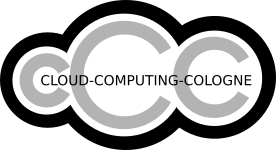Have you ever had to manually upload and tag a lot of files? It’s no fun. Increasingly though, machine learning algorithms can help you or your team classify and tag large volumes of content automatically. And if your company uses Box, a popular file sharing, storage and collaboration service, you can now apply Google ML services to your files with just a few lines of code, using the Box Skills Kit, a new framework within Box’s developer toolkit.With technologies like image recognition, speech-to-text transcription, and natural language understanding, Google Cloud makes it easy to enrich your Box files with useful metadata. For example, if you have lots of images in your repository, you can use the Cloud Vision API to understand more about the image, such as objects or landmarks in an image, or in documents, —or even parse their contents and identify elements that determine the document’s category. If your needs extend beyond functionality provided by Cloud Vision, you can point your Skill at a custom endpoint that serves your own custom-trained model.An example integration in actionNow, let’s look at an example. Many businesses use Box to store images of their products. With the Box Skills Kit and the product search functionality in the Cloud Vision API, you can automatically catalog these products. When a user uploads a new product image into Box, the product search feature within the Vision API helps identify similar products in the catalog, as well as the maximum price for such a product.Configuring and deploying a product search Box skillLet’s look at how you can use the Box Skills Kit to implement the use case outlined above.1.Create an endpoint for your Skill a. Follow this QuickStart guide. b. You can use this API endpoint to call a pre-trained machine learning model to classify new data. c. Create a Cloud Function to point your Box Skill at the API endpoint created above. d. Clone the following repository. e. Next, follow the instructions to deploy the function to your project. f. Make a note of the endpoint’s URI.2.Configure a Box Custom Skills App in Box, then configure it to point to the Cloud Function created above. a. Follow the instructions. b. Then these instructions.And there you have it. You now have a new custom Box Skill enabled by Cloud AI that’s ready to use. Try uploading a new image to your Box drive and notice that maximum retail price and information on similar products are both displayed under the “skills” console.Using your new SkillNow that you’re all set up, you can begin by uploading an image file of household goods, apparel, or toys into your Box drive. The upload triggers a Box Skill event workflow, which calls a Cloud Function you deployed in Google Cloud and whose endpoint you will specify in the Box Admin Console. The Cloud Function you create then uses the Box Skills kit’s FileReader API to read the base64-encoded image string, automatically sent by Box when the upload trigger occurs. The Function then calls the product search function of Cloud Vision, and creates a Topics Card with data returned from the product search function. Next, it creates a Faces card in which to populate a thumbnail that it scaled from the original image. Finally, the function persists the skills card within Box using the skillswriter API. Now, you can open the image in Box drive and click on the “skills” menu (which expands, when you click the “magic wand” icon on the right), and you’ll see product catalog information, with similar products and maximum price populated.What’s next?Over the past several years, Google Cloud and Box have built a variety of tools to make end users more productive. Today, the Box Skills integration opens the door to a whole new world of advanced AI tools and services: in addition to accessing pre-trained models via the Vision API, Video Intelligence API or Speech-to-Text API, data scientists can train and host custom models written in TensorFlow, sci-kit learn, Keras, or PyTorch on Cloud ML Engine. Lastly, Cloud AutoML lets you train a model on your dataset without having to write any code. Whatever your levels of comfort with code or data science, we’re committed to making it easy for you to run machine learning-enhanced annotations on your data.You can find all the code discussed in this post and its associated documentation in its GitHub repository. Goodbye, tedious repetition! Hello, productivity.
Quelle: Google Cloud Platform
